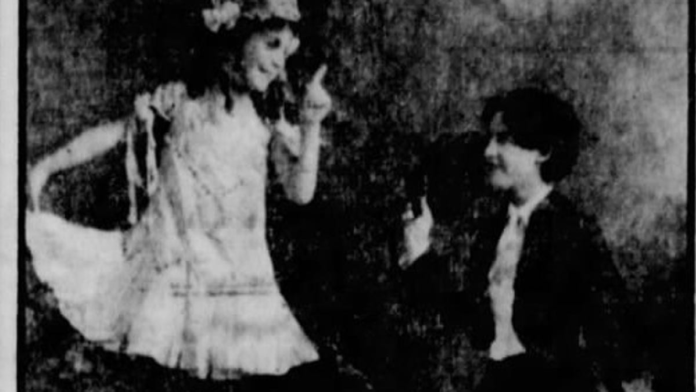Editor’s Note: Jack Becker is the editor of Caprock Chronicles and is a Librarian Emeritus from Texas Tech University. He can be reached at jack.becker@ttu.edu. Today’s article about Lubbock music history is the first of a two-part series by frequent contributor Chuck Lanehart, Lubbock attorney and award-winning Western history writer.
When Lubbock’s magnificent Buddy Holly Hall of Performing Arts and Sciences opened in 2021, it became the latest in a long line of historic venues that welcomed local, national and international musicians to the Texas plains.
In 1891, the newly constructed Lubbock County Courthouse was the cultural center of the community, hosting not only legal affairs, but church services, dances and music concerts. County commissioners approved every form of public entertainment at the courthouse, and an organ was installed on the second floor to accompany religious hymns and community singing. Eventually, a bandstand was built on the square, which offered a venue for dances and regular concerts, but in 1903, commissioners outlawed dancing at the courthouse.
The Lubbock Band, organized in 1891, consisted of two violins, three guitars and a bass cello. The band performed at the courthouse and visiting circuses. Other early music organizations were the Lubbock Concert Band (1909), the Lubbock Band (1912) and the Lubbock Cowboy Band (1913).
By 1905, a wood-frame commercial building at Broadway and Avenue J was the favored venue for Lubbock music lovers. The “Band Hall,” accessible by an outdoor open staircase, occupied the second floor. With kerosene-lamp lighting, dressing rooms, a stage and seating for about 300 patrons, it was described as “the nicest hall on the South Plains.”
The Band Hall hosted local musicians and bands. In 1906, the Lubbock Leader newspaper announced, “The Lubbock 1906 Band will give a grand musical program on the night of the 29th (Thanksgiving). Lubbock should turn out en masse and give the band boys a rousing reception. They are entitled to it, and the funds will certainly go toward a pleasant and worthy cause.”
In 1910, the Baptist Church hosted Lubbock High School commencement exercises, including a performance by the Lubbock Concert Orchestra, with director and violinist Fred Hettler, first violin H.B. Thomas, first coronet Dr. J.E. Kane, second coronet Edgar Inmon, trombonist S.C. Wilson and pianist Miss Willie Cowan.
For a few years, two rickety downtown locations—the Opera House (13th and J) and the Orpheum (1200 Texas)—offered live music, plays and silent movies. In 1913, a new theater opened at 1112 Texas, just west of the courthouse. The Lyric, Lubbock’s first dedicated movie house, also presented live performances, such as the song-and-dance act the Christian Sisters, perhaps the first musical touring act to perform outside a circus tent setting.
Beginning in 1919, the annual “Chautauqua,” a multi-day entertainment extravaganza, was presented by the Lubbock Chamber of Commerce (COC). Under a tent erected in the 1200 block of Broadway, audiences enjoyed music, drama, religion and lectures. A special attraction the first year was the Italian Bersaglieri Band, composed of Italian war veterans who played while wearing the uniform of their country. The extremely popular event was staged—usually in May—until about 1925.
Still, Lubbock lacked a proper public auditorium. In 1922, the COC organized an effort to construct an entertainment venue at 10th Street and Avenue J downtown. However, the octagonal-shaped structure was not suitable for most gatherings due to poor seating, inefficient heating and a dirt floor. Residents called it “that silo-looking building” and “that mule barn.” The venue quickly faded.
In May of 1923, the Lubbock Avalanche lamented the lack of a proper Lubbock band. “It seems that Lubbock people do not get into the spirit of band music. They do not seem to realize the real worth of such an organization in this city and have no idea about the cost of keeping a band.” Nevertheless, two new music organizations were formed the same year: the Lubbock Music Club and Lubbock Music Teachers’ Association.
During the 1920s, the downtown Palace Theater hosted live music concerts from time to time, including a 1929 performance by the US Army Band that drew banner headlines in the Lubbock Avalanche. Dances were held at Lubbock Country Club’s ballroom and the downtown Hotel Lubbock (now the Pioneer Pocket Hotel). Lubbock’s first public dance hall, the Up-Town Dance Palace, opened in 1928 at 8th Street and Texas Avenue.
Texas Tech, which formed its first band in 1925, was mentioned in the Avalanche as a music venue in 1930, when famed violinist Efrem Zimbalist performed there. In 1935, Tech professor Julian Blitz, head of the Tech music department, presented “The Seven Last Words of Christ,” with a chorus of 400 voices. The annual production spanned a dozen years. Gene Hemmle became director of the Tech music department in 1949 and expanded the program to include an orchestra. Since the 1940s, the music department has held annual summer music camps for band, orchestra and choral students. By the 1980s, the Tech Music Department held 200 concerts each year. (The rich history of the Goin’ Band from Raiderland is certainly worthy of a future Caprock Chronicles series.)
Next week: Notable performances at Lubbock High School auditorium, South Plains Fair Park Coliseum, Lubbock Municipal Auditorium/Coliseum and others.
Part 2: Caprock Chronicles explores milestones in Lubbock music, from high schools to Buddy Holly
Home Music news Caprock Chronicles: Milestones in Lubbock music, Part 1 courthouse concerts to Chautauquas...
